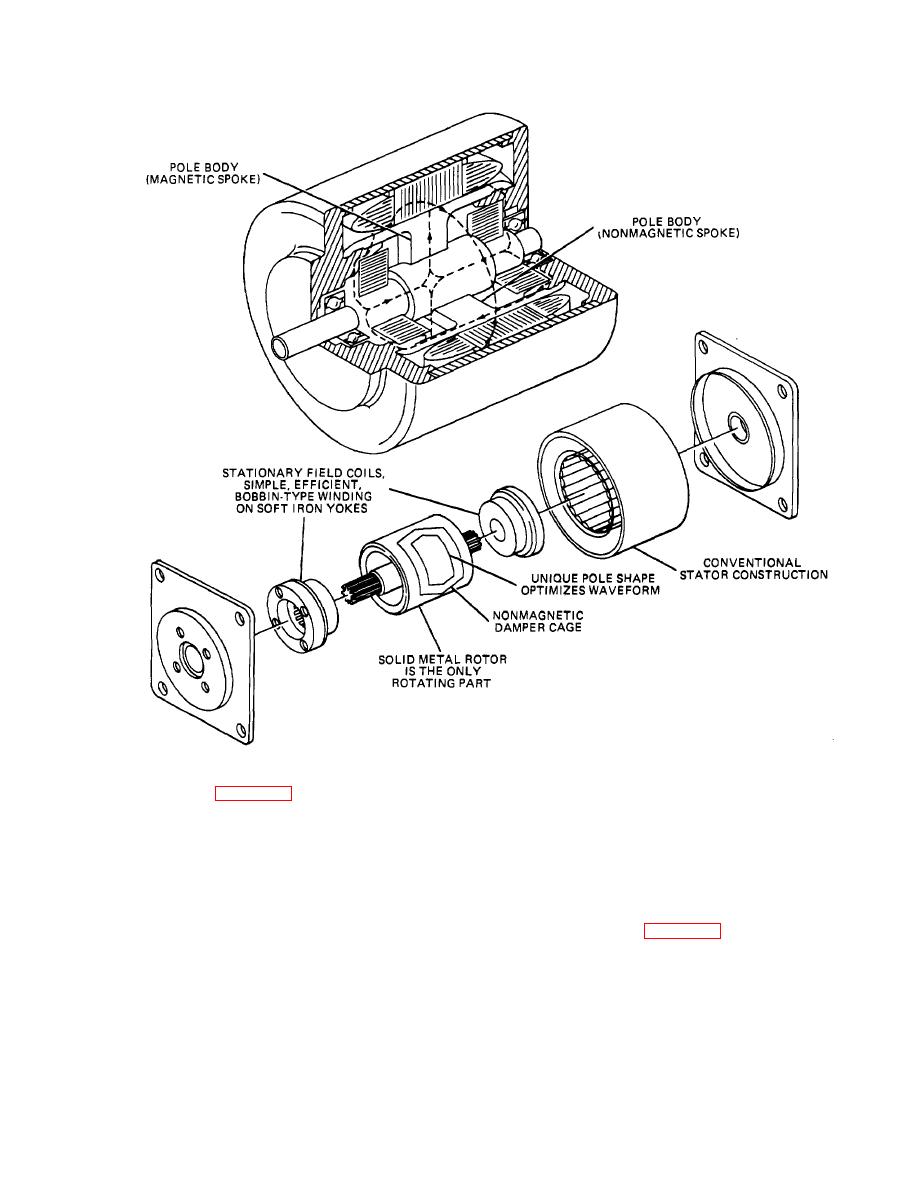
| Tweet |

Custom Search
|
|

|
||
 TM 9-8000
Figure 13-30. Lundell Inductor.
a. Air Cooling (A, Fig. 13-33). In tank-automotive
abrasive particles, water, or other substances to the
generator interior. Furthermore, rotor and stator design
applications, air cooling Is the most common method.
must permit unrestricted passage of air through the
The usual arrangement consists of a fan that forces air
generator. This can be accomplished by designing
through the alternator to cool the rotor, stator, and
passages through the rotor and stator.
However,
rectifier. The major advantage of air cooling Is that the
roughness in the surface of the rotor contributes to
generator and cooling are self-contained, drawing air
windage losses, further affecting unit efficiency.
from the environment.
However, fan power
requirements can become excessive at high speeds
b. Oil Cooling (B, Fig. 13-33). 0il cooling features
because fan designs usually are structured to provide
a transfer of alternator heat into the circulating oil flow,
sufficient cooling at the lowest speed corresponding to
followed by cooling of the hot oil in a heat exchanger.
rated output. Fan power at high speeds then appears as
The oil supply can be part of the driving power system
a severe reduction in generator efficiency. Another
factor is that, unless it is filtered, cooling air can deliver
TA233565
13-29
|
||
 |
||